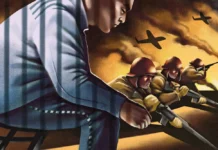Last week, as news of Brexit broke, foreign ministries throughout the world took to social media to comment on the UK’s decision to leave the EU. The German foreign ministry responded in two ways. First, it published a series of tweets from Chancellor Markel’s press conference. Secondly, it changed its Twitter profile picture from an image of the German foreign minister to the EU flag (see below).

(German MFA)
Germany’s response on Twitter can be conceptualized as a form of online click-tivism which is similar to an individual changing his profile picture following an important event. Indeed changing one’s profile picture has become a form of political activism through which people identify with political events or social causes. Such was the case with people who changed their profile picturefollowing the Paris terror attacks or the US supreme country’s ruling legalizing gay marriage
Studies have shown that profile pictures on social media serve two main functions. The first is the creation of an online identity. SNS users employ their profile picture to construct an identity and to communicate that identity to their online communities. Through images users can express their beliefs and values and identify the political movements or communities they belong to. In addition, profile pictures enable one to manage his online impression. Individuals can project a well-crafted image through their profile pictures. Be it an image of popularity, financial success or dedication to a place of employment.
An intriguing question is how do MFAs use their Twitter profile images. Are these used to promote the national brand, or to project a certain institutional image or perhaps to make political statements as was the case with Germany’s foreign ministry. I have previously conceptualized MFA social media activity as a form of “Selfie diplomacy” as ministries use Twitter to manage the national image. Profile pictures may serve as another form of Selfie diplomacy through which MFAs construct thier own digital identity.
To investigate how MFA utilize profile pictures I reviewed the Twitter profile pictures of 69 ministries. Through content analysis I was able to identify five broad categories that offer insight into the use of profile pictures by MFAs.
Category One: Institutionalism
The first category I identified included MFAs whose profile picture consists of the ministry’s building. Such a profile picture can be used by the MFA to identify itself as a professional institution tasked with representing the nation abroad and advancing its interests. Such institutions are home to trained practitioners who use routines and standard operating procedures to achieve their goals. Profile pictures of MFA buildings may also be representative of institutional cultures that take pride in professionalism. Finally, profile pictures of ministry buildings may add credability to social media content. Indeed such pictures signify that the MFA’s content constiutes official statements by the government as opposed to just slogans and catch-phrases.
Below are some examples of this category.

(EU External Action Service)

(MFA of Romanian)

(MFA of Armenia)

(MFA of Kuwait)

(MFA of Austria)
Category Two- The Mission Statement
The second category I identified included MFAs whose profile pictures focuses on the ministry’s mission- to face the world and advance a country’s interest in the global arena. Such MFAs may have an institutional culture that focuses on the ministry’s mission rather than its professional routines.
Profile pictures included in this catagory may also be used to identify the priorities of the MFA. For instance, the image below, used by the Spanish MFA, shows its global outlook. However, the image of the Belgium MFA seems to indicate a 21st century global outlook. This is due to the fact that the Belgium MFA’s picture corresponds with images depicting a globalized world brought together through ICTs and movement of individuals. Thus the Belgium MFA’s Selfie is one of a globally and technologically oriented ministry.

(MFA of Spain)

(MFA of Belgium)
As opposed to the Belgian and Spanish MFAs, Poland’s profile picture identifies a different set of priorities (see image below). Two of the images included in the profile picture showcase the US flag and US Secretary of State Kerry identifying America as a strategic partner. An additional image depicts a multi-lateral meeting at NATO headquarters. Finally, one can see an image of two people wearing a shirt with the Polish MFA’s logo. Taken together, these images suggest that the Polish MFA’s mission is to represent Polish citizens (those wearing the T-shirt) and to protect Poland from aggression (the US and NATO).

(Poland MFA)
Finally, the MFA of the United Arab Emirates uses a profile picture showcasing the flags of the world. Here again one can identify the MFA’s global outlook. However, the rows of flags shown in the picture are reminiscent of those found outside multi-lateral organizations headquarters (e.g., UN in Geneva or New York). As such, this MFA’s mission may be to use multi-lateral diplomacy to advance the national interests.

(United Arab Emirates MFA)
Category Three: A National Institution
The fourth category includes profile pictures that identify the MFA as a national institution that is an integral part of the nation it serves. MFAs with such images may view themselves as social institutions that are part of the society which they serve. Such images may also be targeted at the domestic population and are thus used to build a domestic constituency for the MFA.
The first example, shown below, is the Jordanian MFA’s profile picture that commemorates the 100 year anniversary of the Great Arab Revolt which resulted in the formation of Jordan. This image celebrates the formation of Jordan and clearly identifies the MFA as an institution of the nation which also identifies with the nation.

(Jordan MFA)
The second example, shown below, is the profile picture of the Icelandic MFA. The image celebrates the Icelandic soccer team’s success in the 2016 Euro games. Obviously, this is an attempt by the MFA to takes part in the national celebration and project a sense of pride in the national team’s accomplishments.

(Iceland MFA)
The final example, shown below, is the profile picture of the Israeli MFA. The MFA has chosen to use the Israeli flag as its picture thus identifying with the nation it represents. It should be noted that the Star of David, showcased in the picture, is also a Jewish symbol and may thus resonate with Jewish Diasporas living abroad who view Israel as the Jewish homeland.

(Israel MFA)
Category Four: The National Image
The fourth category I identified included MFAs who use their profile picture to narrate the national image. Thus, these MFAs use the profile picture to construct the national identity as opposed to their own identity. As such, the profile picture becomes a diplomatic tool used for nation branding.
The first example, shown below, is the profile picture of the Slovakian MFA which includes the slogan of Slovakia’s new nation branding campaign- good idea Slovakia.

(Slovakia MFA)
The second example, shown below, is the Ukrainian MFA’s profile picture (shown below). Here the profile picture is used to promote a new image of Ukraine as a country that is changing for the better through reforms. This may be part of an attempt to depict Ukraine as a nation transitiong from internal conlfict and crisis to stability and agreement.

(Ukraine MFA)
Another intesrting example, shown below, is the Ducth MFA’s profile picture. This picture includes the saying “United Nations Security Coucil Cnadiate”. The picture includes a confident soldier looking thorugh a pair of goggles at the horizon under (what might be) the UN flag. As such, this image may be part of the Dutch MFA’s UN campaign and is meant to depict the Netherland’s contribution to peacekeeping missions and its forward thinking orienttaion.

(Dutch MFA)
A different example, shown below, is the Somalian MFA’s profile picture.This picture includes images from various tourist destinations in the country. Thus, the picture serves as part of a campaign meant to encourage tourism to the country while also showcasing its rich history and culture.

(Somalia MFA)
The final example, shown below, is the State Department’s profile picture. Interestingly, this image focuses solely on Secretary Kerry. Yet the image of Kerry may be seen as tied to that of the US as it showcases the globetrotting Secretary who is always on his way to a new destination to promote engagement and democracy. Therefore, this image contributes to the image of the US as a global power that is engaged in events all over the world. What is most surprising is Kerry’s rather somber appearance. This is not the optimistic diplomats bur rather the resolute one.

(US State Department)
Category Five- Status Updates
The fifth category I identified includes profile pictures that serve as “status updates”. Here MFAs use the profile picture to announce important events. By changing thier profile picture the MFA is sending a signal to its various audiences including journalists and the diplomatic milieu.
The first example, shown below, is from the Colombian MFA and it celebrates the peace agreement between the Colombian government and the rebel group FARC. The peace agreement signed last week is seen as major stepping stone towards ending a long and violent internal conflict.

(Colombia MFA)
The second example, shown below, is the profile picture of the Mexican MFA. This picture was changed in ahead of a Mexican state visit to Canada. The image is thus similar to the hanging of Canadian flags in the Mexican capital. Yet more importantly, as a status update, the image is meant to demonstrate Mexico’s commitment to strong bi-lateral ties with Canada. Thus it is a diplomatoc signal aimed at Canada and the diplomatic community.

(Mexico MFA)
Summary:
In this post I attempted to analyze a form of Selfie diplomacy. Through an evaluation of the profile pictures of MFAs I attempted to understand how they construct an online identity and communicate that identity to their online community.
Some MFAs seem to construct an identity that focuses on their institution’s professional capacity. Others use the profile picture to articulate their mission statement while still other use the picture to identify with the nation they serve. Finally, MFAs also use profile pictures as a diplomatic tools through which they brand the nation or send signals to the diplomatic community in the form of a “status updates”.













